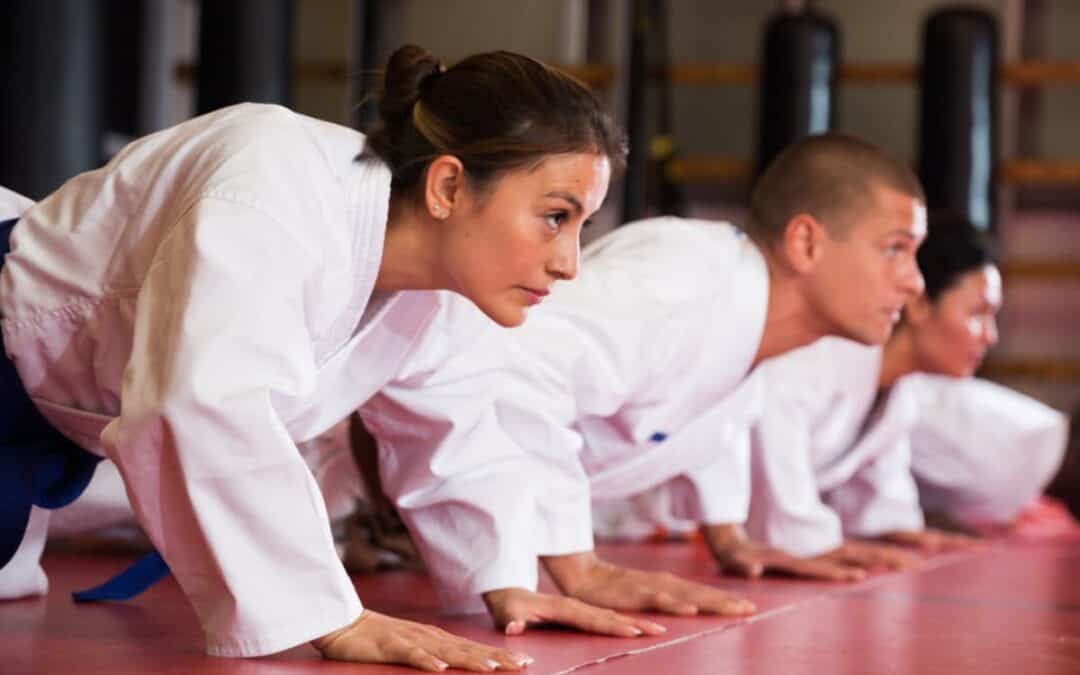Systema is a Russian martial art and health practice. It has been gaining popularity not only for its application as a martial art but also for its breathing style, which is aimed at helping followers develop a greater awareness of their breathing, body, emotional state, and the world around them. But before you explore implementing this system into your daily practice, you may wonder where it originated.
Systema breathing comes from Russian Orthodox monks and can trace its roots to the 10th century AD. It developed out of the Eastern Orthodox tradition of hesychasm, a monastic lifestyle dedicated to the pursuit of divine quietness.
Though systema is growing in popularity, it remains relatively unknown in the Western world, especially in comparison to martial arts like karate and judo, and yoga breathing techniques. If you’re curious about this martial art and breathing technique and want to learn more, you’re in the right place–all you need to do is keep reading.
Table of Contents
What Systema Breathing Involves
There’s quite a lot that goes into systema breathing. However, a simple first systema breathing exercise you can follow is:
- Count to one and, while doing so, breathe in through your nose.
- Count to one and, while doing so, exhale through your mouth.
Repeat this pattern multiple times, slowly increasing the initial count (go from one second to two, two seconds to three, etc.).
For more information on Systema breathing exercises, refer to this YouTube video:
The Principles of Systema Breathing
There are seven principles of systema breathing:
- Nose and mouth: As the video above explains, you should always breathe in through your nose and out through your mouth.
- Leading: Any movement or thought should be preceded by conscious breathing. This isn’t limited to martial arts movement–breath should lead even everyday activities like sitting down in a chair.
- Continuity: You shouldn’t hold your breath, and your natural breathing pattern shouldn’t be interrupted unless there’s a specific training purpose for you to do so.
- Sufficiency: Pay attention to how much air your body needs and consciously try to breathe in only as much as you need. Over- or under-breathing can create tension in your body, and knowing how much air you breathe in can help alleviate this issue. Keep in mind that the amount of air you require will change depending on external factors, such as your elevation, stress levels, and health.
- No tension: Systema breathing is designed to help relieve tension, and one of the principles of this breathing form is ensuring your body is never tense. This is true even when you’re performing challenging physical tasks–your body should remain as loose and relaxed as possible, and breathwork should be used to help you achieve this.
- Pendulum: One of the principles that will be constantly repeated to you when you work with a systema breathing instructor is that of pendulum breathing. If you look at a pendulum, the movement of the rod from one end to the next is gentle, never abrupt. Similarly, the shift between inhalation and exhalation shouldn’t be abrupt; it should be gentle. It should have a rhythm resembling a pendulum, with flowing transitions.
- Independence: The final systema breathing principle (and perhaps the most advanced) is independence. It means your body shouldn’t be tied to a pattern of breathing and action. You should be able to continue breathwork during your activities and begin and end an action regardless of which stage of a breath you’re on. You shouldn’t have to wait until you begin a breath to initiate an action or end a breath to end an action.
Who Developed Systema Martial Arts?
As mentioned above, systema breathing can trace its roots to the 10th century and Russian Orthodox monks. However, the martial art aspect of systema is another matter.
There’s no evidence regarding a single founder of systema. Some claim it’s derived from Russian warrior fighting styles, and others trace its origins to the period following the Russian Revolution in the late 1910s.

Systema is most commonly practiced by Russian GRU special forces and military (and ex-military) members. This has led to the belief that this martial art was developed by the GRU and its predecessors to give operatives an edge in fights by combining yoga, Eastern martial arts, and techniques used by Russian Cossacks. However, this remains unproven, and the origins of systema remain shrouded in mystery.
The systema martial art incorporates the martial aspect with the breathing system discussed above to create a system that incorporates constant movement. It enables you to adapt to changes in your environment with the help of breathing–breathwork enables you to become conscious of your environment, and the movement of your body and mind is in concert with your consciousness of the world around you.
Final Thoughts
Systema breathing is a subset of the Russian martial art systema. However, you don’t have to learn the martial aspects of this art to learn about the breathwork elements.
The martial aspects of systema have their roots in both fighting styles favored by Russian warriors and Russian GRU special forces in the aftermath of the Russian Revolution. However, systema breathing can trace its origins to the tradition of hesychasm practiced by Russian Orthodox (and other Eastern Orthodox) monks.

